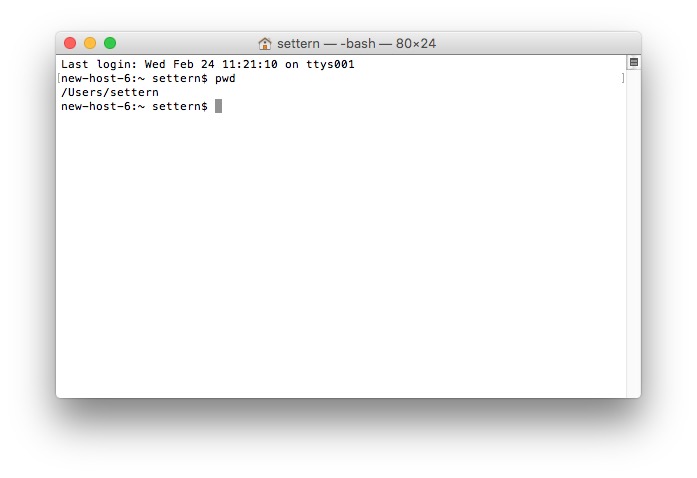
:max_bytes(150000):strip_icc()/CreateMediaCommandmacOSSierra-577ebdc45f9b5831b56c92ad.jpg)
As we want this to be a shortcut used now and in the future, let's make it permanent: Using an easy to remember alias, we can turn the above four step process into just one.Īn alias can be made temporarily (just for the use of one terminal session) or permanently. Show/Hide Hidden Files using Terminal AliasesĪ Terminal alias is a name or shortcut for one or multiple commands. It's not the longest set of instructions or the biggest command to commit to memory but if you're doing this a lot, it's worth spending a few minutes now to save yourself a lot more time in the future. To hide them again, follow the same steps but replace the Terminal command with: defaults write AppleShowAllFiles NO Relaunch Finder by right clicking the Finder Icon whilst holding the `option/alt` key
#WHAT IS THE NAME FOR THE COMMAND PROMPT IN MAC OS SIERRA MAC OS X#
The long way to show hidden Mac OS X files is as follows: Thanks to Guido Schlabitz for making me aware of this new shortcut.

If you're using a version earlier than macOS Sierra, see Show/Hide Hidden Files using Terminal Aliases to setup a toggle command via terminal.

Press once to show hidden files and again to hide them. Since the release of macOS Sierra, when in Finder, it is now possible to use the shortcut: CMD + SHIFT +. The Quickest Way to Show/Hide Hidden Files All I need do now is type showFiles and hideFiles whenever I need to show/hide OS X's hidden files. Today I decided to make a short and easy to remember alias to speed up the process. It seems like every day I search Google for the command to show hidden files on Mac OS X, not to mention Googling for the command to then hide those hidden files a few minutes later.


 0 kommentar(er)
0 kommentar(er)
